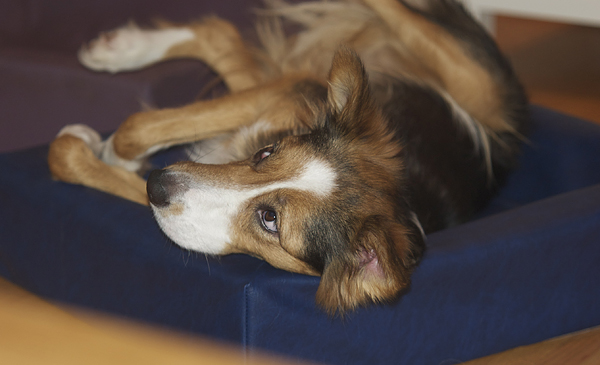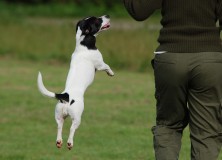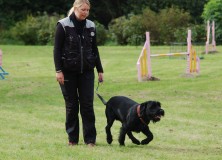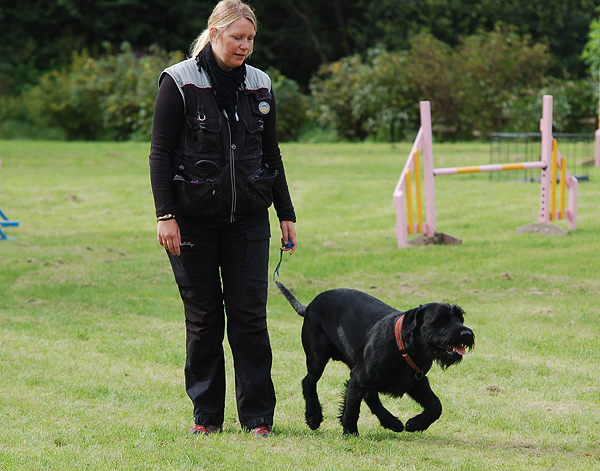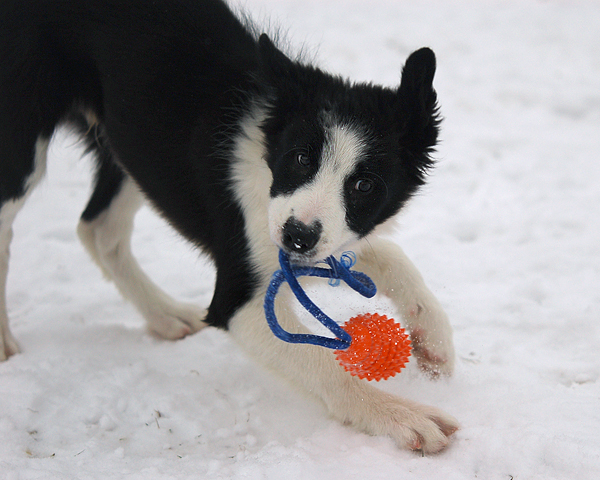Thank you for all the interesting ideas you gave me in yesterday’s blog. My plan for today was to make a video about teaching the dog to heel, but it’s been snowing all day so I’ll do it some other time. I really think you need to see a video to get the idea. A few of the people commenting yesterday said that keeping the dog focused and driven in a trial was the biggest issue for them, so that is what I will address today.
Teaching the exercises for competitive obedience might be hard some times, but the real challenge is to get the dog to perform as well in trials as he is in training. I would say that about fifty percent of training should be preparing the dog for competition, as opposed to just working on details in the exercises. There are different factors that make competitions much more challenging than training, and the first step is to identify them. Here are some things that I find makes the difference:
Lack of reinforcement. This is probably the most important point. We love to reward our dogs and we do it a lot in training. In a trial, the dog has to work for up to fifteen minutes without any food or toys. Most dogs quickly get the difference between training and competition and that’s when we start to call them “ring wise”.Start to let your dog do more than one behavior before he gets rewarded early in your training and increase the time and effort he has to do between rewards gradually. Ideally, your dog should be used to working for longer periods of time in training than you ever ask for him in a trial.
Lack of sequencing. This is related to lack of reinforcement, but brings another aspect to it. Doing many exercises after another without rewarding in between brings out weaknesses that you won’t see if you’re always working one exercise at a time. This is where you go to a trial and don’t understand why your dog made a misstake – “it’s never happened in training”. Make sure that you try all exercises in a sequence with other exercises before it. Make note of any mistakes and fix them before you try the sequence again.
Division of responsibility. When training, I always consider what I want my responsibilities to be, and what responsibilities I lay on the dog. In the end, everything that happens is my responsibility, but I need to train my dog to take care of a lot of things. I can’t do everything for my dog in a trial, but many trainers still take all the responsibility in training. They are always helping the dog out and they never teach the dog to be an active part in training.When I train my dogs, I have the division of responsibility in my mind.
The most important thing is that I never ask my dog to work with me. My dog has to ask me to work with him. I don’t ask him to look at me or to come to heel. The dog has to take responsibility for those things if he wants to work. A trainer that is always asking the dog to work, regardless of if she does it with lures, cues or corrections, will create a lazy dog that knows that he can engage in other things (looking around, sniffing, lagging), because the handler will always tell him when it is important that he shows interest.
Make sure that you have great rewards that your dog loves, and teach him to beg for them. Let your dog be active in asking you to work with him and reward him for taking initiative.
Distractions and new environments. Of course, distractions can be a big difference between training and competition. Make sure that you include anything that could disturb you or your dog in your training.
Before, between and after exercises. Most people only train the exercises and never think of everything else that goes on in a trial. Many dogs (and handlers) don’t know that to do between exercises, or how to get into the ring to start up in a nice way, which causes the dog to loose focus. Make sure that you include entering the ring and transportations between exercises in your training for competition.
Warm up here, perform there. Many dogs are fine as long as they have checked a new place out and have gotten a few rewards in that place. In a trial, you need to warm up away from the ring and then be ready to walk to a new spot and perform right away. Make sure that you do this often in training. Warm your dog up on the parking lot, then walk onto the grass (or warm up in one area of the training hall and then move to a new area) and let the dog follow you for a little while before you reward.
Don’t ask your dog to come with you, reward him if he chooses to (and if he doesn’t, evaluate how much your dog is willing to work for his reward and think about how often your dog asks you to work vs. the other way around). Gradually increase the amount of time your dog has to work in the “ring” before you reward, but don’t always make it harder. Surprise your dog with an early reward once in a while.
I’m sure that you can come up with more ideas. Please post a comment if you do, or if you have any questions. Training for competitions is a massive theme to cover in one blog post, so this is just a scratch on the surface. The most important things to remember is to train your dog for trials, not just exercises. Make your training look like competition a lot and train your dog to a level where the exercises feel easy at a trial and the dog is used to work for longer periods of time without rewards. And make sure that you make your dog feel like a champion every time you finish a trial or a competition-like training. There should always be a great reward for the dog in the end.
Let me know what you think!




